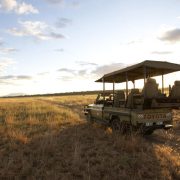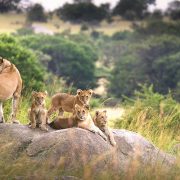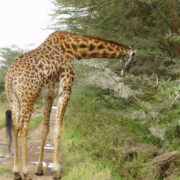First Time Safari in Africa: Complete Planning Guide
- Travel Tips, Wildlife
- October 23, 2025
You’ve dreamed about it for years. You’ve watched countless nature documentaries. You’ve imagined yourself in an open safari vehicle, surrounded by golden savannah, watching a pride of lions bask in the African sun. Now you’re finally ready to turn that dream into reality—but where do you even start?
Planning your first African safari can feel overwhelming. Which country should you visit? What’s the best time to go? How much will it really cost? What should you pack? Is it safe? Will you actually see the Big Five?
After leading safaris across East Africa for over a decade, I can tell you this: your first safari will likely be one of the most transformative travel experiences of your life. But it requires proper planning to ensure everything goes smoothly and you make the most of this once-in-a-lifetime adventure.
This comprehensive guide answers every question first-time safari-goers ask, from the very beginning stages of planning through your actual time in the bush. By the end, you’ll feel confident and excited to book your dream African safari.
Quick Answer: For first-time safari-goers, we recommend Kenya’s Masai Mara or Tanzania’s Serengeti (July-October for the Great Migration), or South Africa’s Kruger National Park (year-round excellent wildlife viewing with the easiest logistics). Plan for 7-10 days minimum, budget $2,500-$5,000 per person for a mid-range experience, and book 6-12 months in advance, especially for peak season travel.
What Is an African Safari, Really?
Before we dive into the logistics, let’s clarify what a safari actually entails. The word “safari” comes from the Swahili word meaning “journey” or “expedition,” and that’s exactly what it is—a journey into Africa’s wild spaces to observe animals in their natural habitat.
What a Modern Safari Looks Like
Contrary to what you might imagine from old movies, modern safaris are not about camping in tents you pitch yourself or roughing it with minimal amenities (unless that’s specifically what you choose). Most safaris today involve:
Game Drives: The primary activity on most safaris. You’ll travel in specially designed 4×4 safari vehicles (typically Toyota Land Cruisers or Land Rovers) with open sides or pop-up roofs for optimal viewing and photography. These drives typically last 3-4 hours and happen twice daily—early morning (around 6:00 AM) and late afternoon (around 4:00 PM).
Comfortable Accommodation: From luxury tented camps with en-suite bathrooms and gourmet meals to mid-range lodges with swimming pools, modern safari accommodations range from comfortable to absolutely luxurious.
Expert Guides: Your safari guide is key to your experience. These highly trained professionals know animal behaviour, can track wildlife, identify bird species, and ensure your safety while making sure you don’t miss any action.
All-Inclusive Experiences: Most safari packages include all meals, accommodations, game drives, park fees, and transfers. You typically only pay extra for drinks (sometimes), tips, and personal purchases.
What Makes African Safaris Special?
Unlike visiting a zoo or wildlife park, on safari you’re entering the animals’ world—not the other way around. You’re a guest in their home. The unpredictability is part of the magic. You might witness a dramatic lion hunt, stumble upon a leopard lounging in a tree, or watch thousands of wildebeest crossing a crocodile-infested river.
Every safari is different. Even on the same game drive routes, you’ll see different animals, behaviors, and moments. That’s what makes it so addictive—many people return for their second, third, and tenth safaris because no two experiences are ever the same.
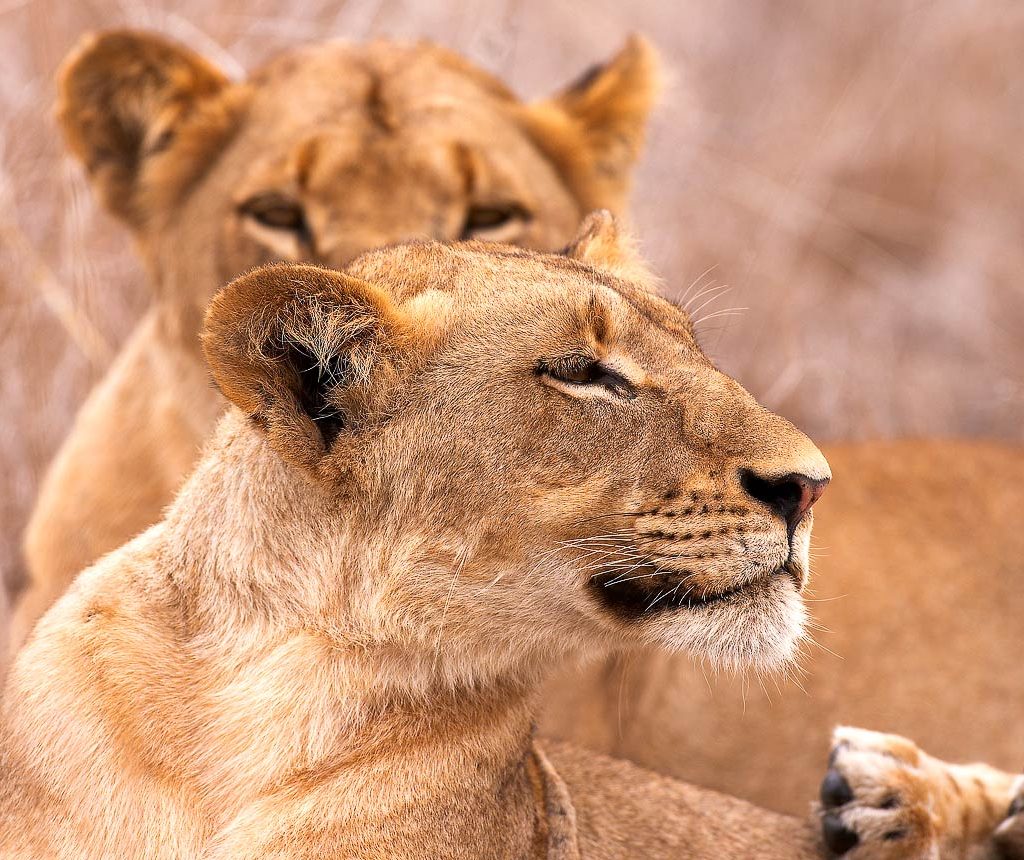
Best Countries for First-Time Safari-Goers
Africa has over 150 game parks and reserves, but some destinations are better suited for first-timers than others. Here are the top choices based on wildlife abundance, accessibility, infrastructure, and overall experience.
Kenya: The Classic Safari Destination
Best For: First-timers wanting guaranteed wildlife, Great Migration viewing (July-October), easier logistics
Top Parks:
- Masai Mara National Reserve: Home to the Big Five, famous for wildebeest migration and Mara River crossings
- Amboseli National Park: Large elephant herds with Mount Kilimanjaro backdrop
- Samburu National Reserve: Unique northern species like Grevy’s zebras, reticulated giraffes, and gerenuk
Why Kenya for First-Timers:
- Excellent infrastructure and well-developed tourism industry
- Shorter travel distances between parks
- Multiple accommodation options for every budget
- Easy access from Nairobi (5-6 hour drive or 45-minute flight to Masai Mara)
- High wildlife density means guaranteed sightings
- English widely spoken
Typical Costs: $250-600 per person per day (all-inclusive)
Best Time: July-October for migration, January-March for fewer crowds and lower prices
Tanzania: The Serengeti and Beyond
Best For: Those wanting vast wilderness, year-round migration experiences, combining with Zanzibar
Top Parks:
- Serengeti National Park: Endless plains, incredible year-round wildlife, multiple migration events
- Ngorongoro Crater: World’s largest intact volcanic caldera, highest concentration of wildlife
- Tarangire National Park: Massive elephant populations and ancient baobab trees
Why Tanzania for First-Timers:
- Serengeti offers the most authentic “Out of Africa” experience
- Less crowded than Kenya’s Masai Mara
- Spectacular calving season (January-March)
- Easy combination with Zanzibar beaches
- Ngorongoro Crater is unmissable
Typical Costs: $300-700 per person per day (all-inclusive)
Best Time: December-March for calving, June-October for northern Serengeti migration
South Africa: The Easiest Entry Point
Best For: First-timers wanting malaria-free options, self-drive possibilities, combining safari with wine/beaches
Top Parks:
- Kruger National Park: One of Africa’s largest game reserves, excellent Big Five viewing
- Sabi Sands Private Reserve: Adjacent to Kruger, offers exclusive, luxury experiences
- Hluhluwe-iMfolozi Park: KwaZulu-Natal, excellent rhino viewing
Why South Africa for First-Timers:
- Most accessible African safari destination
- Excellent infrastructure and roads
- Malaria-free areas available (some parts of Kruger)
- Self-drive safari options for budget travelers
- Can combine with Cape Town, Garden Route, wine regions
- First-world amenities and medical facilities
Typical Costs: $200-500 per person per day (budget camping to luxury lodges)
Best Time: May-September for dry season game viewing
Contact our Safari Experts to plan your South Africa Safari
Botswana: For the Adventurous First-Timer
Best For: Those wanting exclusive, uncrowded, water-based safaris
Top Parks:
- Chobe National Park: World’s largest elephant concentration
- Okavango Delta: Unique water-based safari with mokoro (dugout canoe) experiences
- Makgadikgadi Pans: Otherworldly landscapes and zebra migration
Why Botswana:
- Low-volume, high-cost model means fewer tourists
- Unique water-based safari experiences
- Incredibly pristine wilderness
- Excellent for photographers wanting uncrowded shots
Typical Costs: $500-1,200 per person per day (generally more expensive)
Best Time: May-October for dry season, July-October for Chobe elephants
Contact our Safari Experts to plan your Botswana Safari
Namibia: For Self-Drive Enthusiasts
Best For: Adventurous travelers wanting dramatic desert landscapes, self-drive flexibility
Top Parks:
- Etosha National Park: Excellent self-drive wildlife viewing around waterholes
- Sossusvlei: Towering red sand dunes and desert-adapted wildlife
Why Namibia:
- Easiest country for self-drive safaris
- Excellent roads and infrastructure
- Unique desert landscapes
- More affordable than other destinations
- Very safe for tourists
Typical Costs: $150-400 per person per day
Best Time: May-October
Our Top Recommendation for First-Timers
If you’re visiting July-October and want to see the Great Migration: Kenya’s Masai Mara (easier access, shorter trip possible)
If you’re visiting January-March or want less crowds: Tanzania’s Serengeti + Ngorongoro (spectacular calving season)
If you want the easiest logistics and malaria-free options: South Africa’s Kruger (can self-drive, excellent infrastructure)
If you want to experience two countries: Combined Kenya-Tanzania safari (12-14 days, see multiple parks and ecosystems)
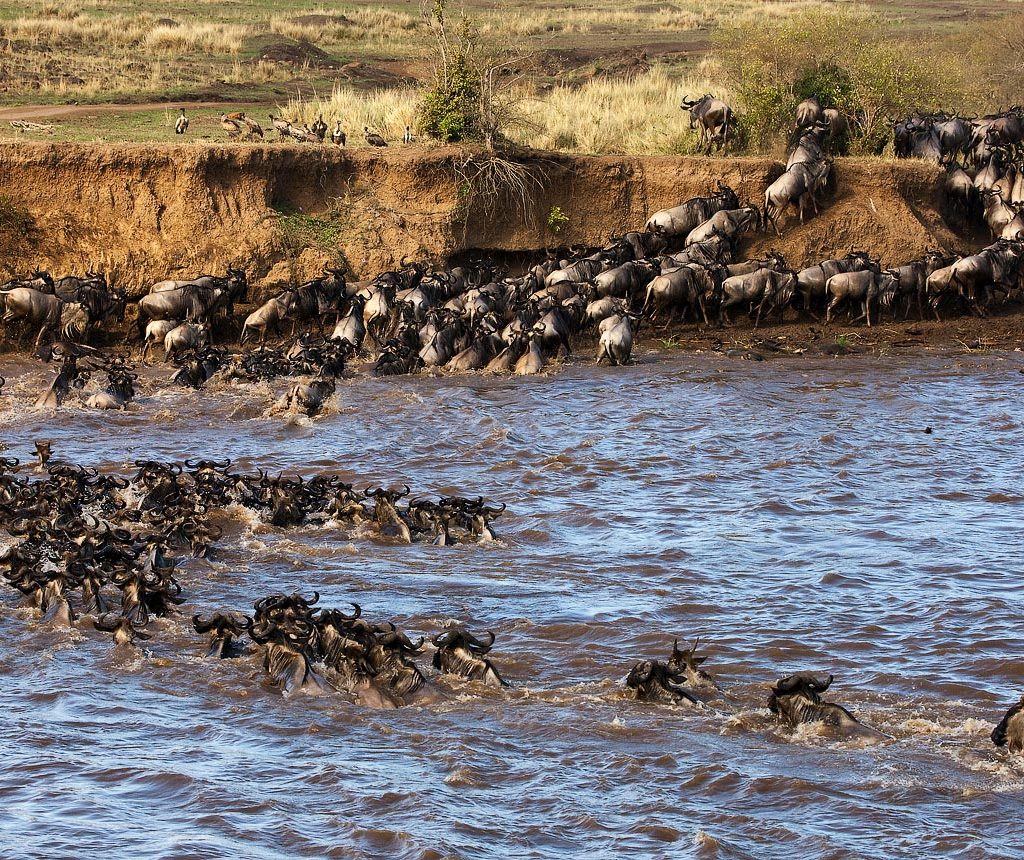
When Is the Best Time to Go on Safari?
This is one of the most important decisions you’ll make, as timing dramatically affects your experience, costs, and what wildlife you’ll see.
Understanding African Seasons
Africa’s seasons are opposite to North America and Europe. When it’s winter in the Northern Hemisphere, it’s summer in sub-Saharan Africa (and vice versa). However, “seasons” in tropical Africa are better defined by rainfall than temperature:
Dry Season (Winter): June-October in East and Southern Africa
- Advantages: Best wildlife viewing (animals concentrate around water), pleasant temperatures, clear skies, minimal rain, easier roads
- Disadvantages: Peak tourist season (higher prices, more crowds), dusty conditions, hot midday temperatures
Wet Season (Summer): November-May in East and Southern Africa
- Advantages: Lower prices (30-50% off), fewer tourists, lush green landscapes, baby animals (December-March), excellent birding, dramatic skies for photography
- Disadvantages: Afternoon rain showers, some roads difficult to navigate, taller grass (harder to spot predators), some camps closed
Month-by-Month Safari Planning
January-March: The Calving Season
- Best for: Tanzania’s Serengeti southern plains, Kenya’s Masai Mara (resident wildlife)
- Why go: Approximately 500,000 wildebeest calves born (February-March), incredible predator action, fewer tourists than peak season
- Weather: Short dry season in East Africa, warm temperatures, occasional afternoon showers
- Costs: Medium-high
- Verdict: One of the absolute best times for safari—dramatic wildlife action without peak crowds
April-May: The Long Rains
- Best for: Budget travelers, photographers who love dramatic skies
- Why consider: Lowest prices of the year (40-50% off), virtually empty parks, incredibly lush landscapes
- Why avoid: Heavy afternoon rains, some roads impassable, taller grass makes predator spotting harder, some camps close
- Costs: Lowest
- Verdict: Only for flexible, adventurous travelers who prioritize budget and don’t mind rain
June: Transition Month
- Best for: Western Serengeti (Grumeti River crossings), shoulder season deals
- Why go: Migration moving north, great weather beginning, fewer crowds than July-October, still reasonable prices
- Costs: Medium
- Verdict: Underrated sweet spot—good value with improving conditions
July-October: Peak Dry Season
- Best for: Great Migration in Masai Mara/Northern Serengeti, guaranteed wildlife viewing, first-timers
- Why go: Peak migration months with dramatic Mara River crossings, excellent weather, best game viewing conditions, animals concentrated at water sources
- Why reconsider: Most expensive season, highest crowds (especially August-September), hot and dusty, book 6-12 months advance
- Costs: Highest (peak season rates)
- Verdict: Peak season for good reason—spectacular wildlife action, but expect company and higher prices
November: Short Rains
- Best for: Budget travelers, those wanting fewer crowds
- Why go: Migration returning to Tanzania, shoulder season prices, usually just brief afternoon showers
- Costs: Medium
- Verdict: Solid option if you’re flexible and don’t mind occasional rain
December: Festive Season
- Best for: Families on school holidays, combining safari with beach
- Why go: Good weather resuming, migration in southern Serengeti, festive atmosphere in camps
- Costs: High (holiday premium)
- Verdict: Excellent wildlife viewing, but prepare for holiday price premiums
Best Time Based on Your Priorities
Best wildlife viewing overall: July-October (dry season)
Best for Great Migration river crossings: Late July-September (Masai Mara)
Best for wildebeest calving season: January-March (Southern Serengeti)
Best for avoiding crowds: April-June, November
Best for photography: January-March (green season with babies), or June (post-rain clarity)
Best for budget: April-May (green season discounts)
Best weather (least rain): June-October
Best for birding: November-April (migratory birds present)
How Much Does a Safari Cost?
Let’s be honest: safaris are expensive. But understanding what you’re paying for and where costs come from helps you budget appropriately and find the best value.
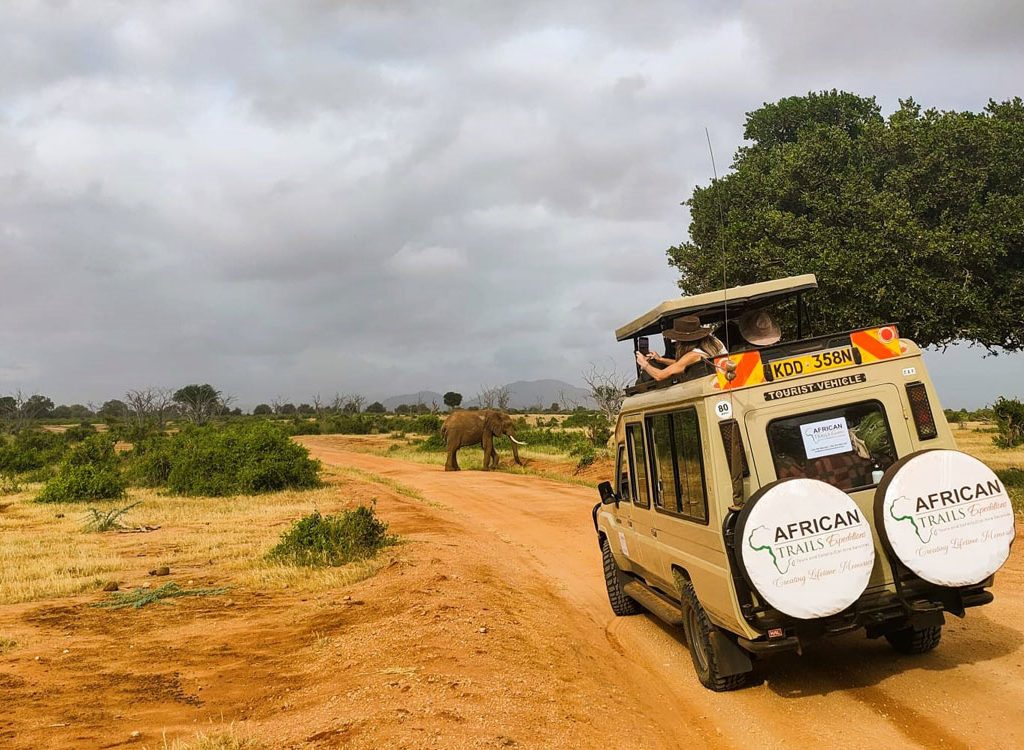
Cost Breakdown by Safari Category
MID-RANGE SAFARIS: $300-500 per person per day
What you get:
- Comfortable tented camps or lodges
- Smaller vehicles (typically 4-6 people)
- Quality meals (often à la carte options)
- Experienced guides
- Better positioned camps
- Some extras (sundowner drinks, bush walks)
What's typically NOT included:
- Alcoholic beverages (sometimes)
- Laundry
- Tips
- Premium activities (hot air balloons, night drives)
Best for: Most first-time safari-goers wanting comfort without luxury prices
LUXURY SAFARIS: $600-1,200 per person per day
What you get:
- High-end tented camps or exclusive lodges
- Private or semi-private vehicles
- Gourmet meals and premium drinks included
- Top-tier guides
- Best locations (often private conservancies)
- Swimming pools, spa services
- Extras: sundowners, bush dinners, walking safaris
- Fewer guests (more exclusive)
What's typically NOT included:
- Premium champagne/wines (sometimes)
- Tips (though sometimes included)
- Helicopter transfers
Best for: Ultra-high-net-worth travelers, once-in-a-lifetime celebrations
What's Included in "All-Inclusive" Safari Packages?
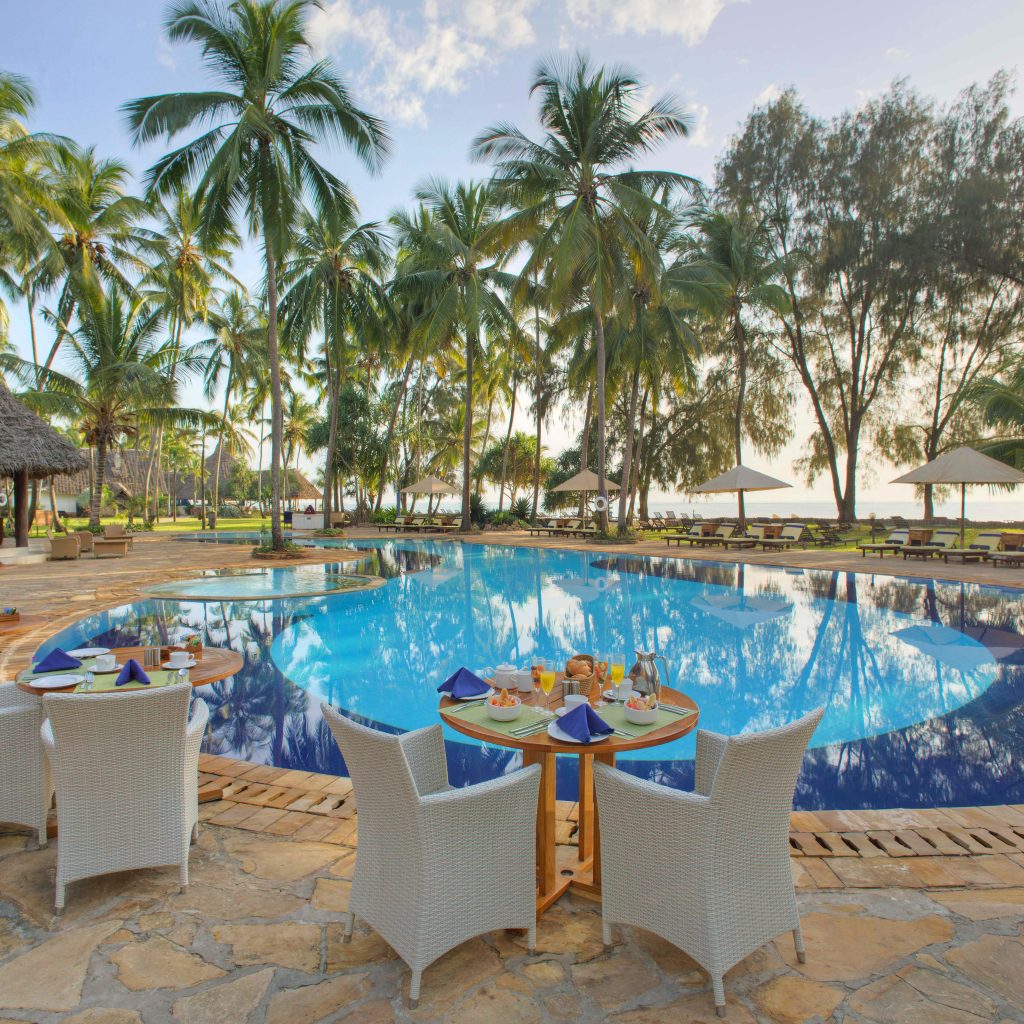
Most safari packages advertise as “all-inclusive,” but understanding exactly what that means prevents surprises:
Typically Included:
✅ All meals (breakfast, lunch, dinner)
✅ Game drives in 4×4 safari vehicles
✅ Services of professional driver-guide
✅ Park entrance fees and conservation fees
✅ Airport/airstrip transfers
✅ Drinking water on game drives
✅ Tea/coffee throughout the day
Often INCLUDED (check your package):
✅ Some alcoholic beverages (house wines/beers)
✅ Soft drinks
✅ Laundry service (luxury camps)
✅ Walking safaris (where permitted)
Other Costs to Budget for
Beyond the safari package price, budget for these additional expenses:
- International Flights
- Visa Fees
- Vaccinations
- Travel Insurance
- Tips: Budget $15-25 per person per day (guides, trackers, camp staff)
- Additional Activities:
- Hot air balloon safari: $450-600 per person
- Cultural village visits: $20-50 per person
- Night game drives: $50-100 per person
- Souvenirs and Shopping: $50-200+
- Pre/Post Safari Hotel Nights: $100-300 per night in Nairobi/Arusha
Money-Saving Safari Tips
If you’re on a tighter budget, here’s how to make safaris more affordable:
- Travel during shoulder or green season (April-June, November) for 30-50% discounts
- Book a group tour instead of private (can save 40-60%)
- Choose Kenya over Tanzania (generally 15-25% cheaper)
- Stay just outside park boundaries (conservancy lodges often better value)
- Self-drive in South Africa or Namibia (huge savings on guide/vehicle costs)
- Combine with friends to share private vehicle costs
- Book directly with lodges (avoid tour operator markup)
- Limit internal flights (drive when possible)
- Shorter safari, longer beach stay (beaches are much more affordable)
- Book well in advance (early bird discounts of 10-20%)
How Long Should Your First Safari Be?
This depends on your available time, budget, and how many destinations you want to experience. Here’s what different durations offer:
3-4 Days: The Minimum Safari
Best for: Time-limited travelers, adding safari to business trip, tight budgets
What you can do:
- Single park experience (Masai Mara or northern Serengeti)
- 6-8 game drives total
- Good chances of seeing most of the Big Five
Pros
- More affordable
- Less time off work
- Still magical and memorable
Cons
- Rushed feeling
- Weather/luck factors have bigger impact
- Less time to relax
- Can’t visit multiple parks
5-7 Days: The Sweet Spot
Best for: Most first-timers, standard vacation time, single-country experience
What you can do:
- 1-2 parks thoroughly explored
- 10-14 game drives
- Excellent Big Five viewing chances
- Time to relax and enjoy the safari rhythm
- Possible to combine two parks (e.g., Masai Mara + Amboseli)
Pros
- Enough time for comprehensive experience
- Multiple chances to see specific animals
- Can experience different ecosystems
- Don’t feel rushed
- Reasonable cost
Cons
- May want more time once there
- Still challenging to visit 3+ park
Our verdict: Perfect duration for most first-timers. Long enough to feel satisfied, short enough to fit normal vacation time.
8-10 Days: The Optimal Experience
Best for: Serious wildlife enthusiasts, multi-park exploration, combining countries
What you can do:
- 2-3 parks comprehensively
- 16-20 game drives
- Virtual guarantee of seeing everything you hoped for
- Relaxed pace with downtime
- Combine safari with beach extension
- Experience two countries (Kenya + Tanzania)
Pros
- Deeply satisfying experience
- See diverse ecosystems and wildlife
- Time to truly unwind and absorb
- Weather/timing factors matter less
- Can witness different migration events
Cons
- Higher total cost
- Requires more vacation time
- May feel long for some people
Our verdict: If you have the time and budget, this is ideal. You’ll see incredible diversity without feeling rushed.
First-Timer Duration Recommendations
Minimum viable safari: 4 days (single park)
Recommended minimum: 6-7 days (allows 2 parks or thorough single-park experience)
Optimal for first-timers: 8-10 days (multiple parks, relaxed pace)
Ultimate experience: 12-14 days (safari + beach, multiple countries)
Important consideration: Remember you’ll be waking up at 5:30-6:00 AM for morning game drives and returning from evening drives around 7:30-8:00 PM. While exhilarating, it’s also tiring. Most people find 10-12 days to be the maximum before they’re ready for the comforts of home or a beach resort.
What Will You Actually See? (Managing Expectations)
Let’s set realistic expectations about wildlife viewing on your first safari.
The Big Five: Will You See Them All?
The “Big Five” (lion, leopard, elephant, buffalo, and rhino) were named by big game hunters for being the most dangerous and difficult animals to hunt on foot. Today, they represent safari’s ultimate checklist.
Your chances of seeing each on a 7-day safari:
Lions: 95%+ chance
- The most commonly seen big predator
- Social animals often found in prides
- Usually spotted lounging in shade or on rocks
- Best sightings: Masai Mara, Serengeti, Kruger
Elephants: 95%+ chance
- Abundant in most major parks
- Often in family herds
- Impossible to miss in parks like Amboseli, Chobe, Tarangire
- Most sightings: Near water sources and riverine forests
Buffalo: 90%+ chance
- Large herds common in most parks
- Often seen near water
- During migration season, thousands visible
Leopards: 60-75% chance
- More elusive and solitary
- Often rest in trees during the day
- Require skilled guides and patience
- Best sightings: Private conservancies, Sabi Sands, South Luangwa
Rhinos: 40-70% chance (varies greatly by destination)
- Most endangered of the Big Five
- Black rhinos very rare in Kenya/Tanzania
- Better odds: Ngorongoro Crater, Ol Pejeta Conservancy, Kruger, Hluhluwe-iMfolozi
- If rhinos are priority, plan specifically around this
Beyond the Big Five: Other Wildlife You’ll See
A common mistake first-timers make is obsessing over the Big Five and missing the incredible diversity of other wildlife:
Predators:
- Cheetahs (excellent chances in Mara/Serengeti)
- Hyenas (almost guaranteed)
- Jackals
- Wild dogs (rare but possible in Serengeti, Botswana)
Herbivores:
- Giraffes (virtually guaranteed)
- Zebras (everywhere in massive numbers)
- Wildebeest (especially during migration)
- Hippos (common near rivers)
- Warthogs
- Various antelope species (impalas, gazelles, topi, hartebeest, waterbuck)
Primates:
- Baboons (very common)
- Vervet monkeys
- Colobus monkeys (in forested areas)
Birds:
- 500-700 species depending on park
- Secretary birds, eagles, vultures, hornbills, bee-eaters
- Flamingos (Lake Nakuru, Lake Natron)
The Reality of Game Viewing
Here’s what safari companies won’t always tell you, but I will:
You won’t see action-packed wildlife every second: Game drives involve a lot of driving and searching. You might spend 30-45 minutes without seeing major wildlife, then suddenly encounter a pride of lions. The searching is part of the experience—enjoy the landscapes, bird life, and anticipation.
You can’t predict or control what you’ll see: Wildlife viewing is never guaranteed. Animals are wild and move according to their own needs, not tourist schedules. Even in the best parks during peak season, you might miss seeing certain animals.
Some days will be better than others: You might have an incredible morning with multiple big cat sightings, then a quieter afternoon drive. Or vice versa. That’s the nature of wildlife—it’s unpredictable, and that’s what makes it magical.
Weather affects visibility: Rain, tall grass, and heat (which makes animals seek shade) all impact viewing. This is why dry season (June-October) is considered best for game viewing—animals concentrate at water sources and grass is shorter.
Timing matters: Early mornings (6:00-10:00 AM) and late afternoons (4:00-7:00 PM) offer the best wildlife activity. Midday is typically quiet as animals rest in shade to escape the heat. Plan rest/relaxation time during midday hours.
Don’t compare your safari to others: Someone might see a leopard kill on their first game drive, while you don’t see a leopard until day five. Someone else might witness the Great Migration river crossing, while you see thousands of wildebeest but no crossings. Every safari is different—embrace YOUR unique experience.
What to Expect on a Typical Safari Day
Let me walk you through a standard day on safari so you know exactly what to expect.
5:30 AM – Early Morning Wake-Up Call
Your tent/room steward will gently wake you (usually with a knock and “Jambo” greeting) or bring early morning tea/coffee to your room. Yes, this is early—but trust me, it’s worth it. This is prime wildlife viewing time.
What to do:
- Get dressed in layers (it’s cold at dawn)
- Use the bathroom
- Grab your camera, binoculars, and sunglasses
- Apply sunscreen and insect repellent
6:00 AM – Breakfast (Light/Continental)
Most camps offer a quick continental breakfast before the morning drive: fresh fruit, pastries, yogurt, coffee, tea, juice. Some guests skip this and just have coffee, preferring to get out sooner.
6:15-6:30 AM – Morning Game Drive Departs
You’ll board your safari vehicle with your guide and typically 2-6 other guests (depending on vehicle capacity and booking type). The guide will introduce the day’s plan and head out in search of wildlife.
What happens:
- Drive slowly through the park/reserve
- Guide looks for fresh tracks and signs
- Stop frequently for animal sightings
- Guide shares information about behavior, ecology, tracking
- Opportunities for photography
- Toilet breaks if needed (designated areas)
What you might see: Predators returning from night hunts, animals becoming active after the cool night, stunning sunrise, incredible morning light for photography, fresh tracks
9:30-10:00 AM – Mid-Morning Break
Depending on wildlife activity, your guide might stop at a scenic spot for a “bush breakfast” or coffee break. Some lodges send out a full breakfast setup in the bush, while others simply offer coffee/tea and snacks.
This is a great time to:
- Stretch your legs
- Use portable facilities if available
- Have snacks
- Chat with your guide about the morning’s sightings
- Download photos from your camera
10:30 AM-12:00 PM – Return to Camp
You’ll typically return to camp/lodge mid-to-late morning as the day heats up and animals seek shade.
12:30 PM – Lunch
A substantial meal—usually three courses or a buffet. Sample menus might include salads, grilled meats, pasta dishes, vegetarian options, and desserts. Lunches are leisurely affairs designed for relaxation.
1:00 PM – 4:00 PM – Midday Rest Time
This is YOUR time. Animals rest during the hottest part of the day, and you should too. Most guests use this time to:
- Nap in their tent/room
- Swim in the pool
- Read on their veranda
- Review and edit photos
- Write in journals
- Get a massage (at luxury camps)
- Watch animals at nearby waterholes from the lodge
- Catch up on emails if Wi-Fi available
Important: Don’t feel guilty about resting! Safari days are early and long. You need this downtime, and you’ll enjoy evening drives more if you’re refreshed.
3:30-4:00 PM – Afternoon Tea
Light snacks before the evening game drive: tea, coffee, cookies, cakes, savory snacks.
4:00-4:30 PM – Evening Game Drive Departs
Similar to the morning drive but in reverse—you’ll search for wildlife as animals become active again in the cooler temperatures.
What you might see:
- Predators waking up and preparing to hunt
- Herbivores emerging to feed
- Spectacular golden hour light for photography
- Increased animal activity as temperatures drop
6:30-7:00 PM – Sundowner Stop
One of safari’s most magical moments: your guide will stop at a scenic viewpoint as the sun sets. Camp staff will have set up drinks and snacks (gin and tonics are traditional). You’ll sip cocktails while watching the sun disappear over the African landscape.
This is the perfect time for:
- Taking in the moment
- Toasting to the day’s adventures
- Watching the sky change colors
- Relaxing before dinner
7:00-8:00 PM – Return to Camp (Night Drive Optional)
If you’re in a national park, you must return to camp by sunset (usually around 6:30-7:00 PM depending on season). If you’re in a private conservancy, your guide might continue with spotlights to find nocturnal animals.
8:00-8:30 PM – Freshen Up
Quick time to shower, change for dinner, and relax.
8:30-9:30 PM – Dinner
Dinner is typically a social, leisurely affair. You’ll often eat together with other guests (unless you’ve booked a private camp), sharing stories of the day’s sightings. Dinners are usually 3-4 courses and can be served:
- In the main dining area
- Under the stars (bush dinner)
- Around a campfire (boma dinner)
- In private on your veranda (honeymoon/special request)
Sample menu: Soup or salad starter, roasted meats or fish with vegetables and starches, dessert, cheese board, coffee/tea
10:00 PM – Evening Wind-Down
After dinner, many camps gather around the fire for drinks and conversation. Guides often share stories about wildlife encounters and African bush life.
Bedtime: Most guests turn in around 10:00-11:00 PM since wake-up calls come early.
Security note: Most camps have staff who will escort you to your tent at night with flashlights, as wildlife sometimes passes through camps. Never walk alone in the dark
Essential Vaccinations and Health Requirements
Let’s address the medical and health preparation you need for your safari.
Required Vaccinations
Yellow Fever:
- Required if: Traveling from or through yellow fever endemic countries (most of South America, parts of Africa)
- Not required if: Traveling directly from North America, Europe, Australia, or Asia
- Where required: Kenya and Tanzania require proof if coming from endemic areas
- Cost: $150-250
- When to get it: At least 10 days before travel (certificate valid for life)
- Our advice: Even if not required, consider it if traveling to multiple African countries
Strongly Recommended Vaccinations
Hepatitis A:
- Recommended for all travelers
- Transmitted through contaminated food/water
- Two-dose series (second dose 6-12 months after first)
- Cost: $60-100 per dose
Typhoid:
- Recommended for most travelers
- Transmitted through contaminated food/water
- Oral vaccine or injection available
- Cost: $80-120
Hepatitis B:
- Recommended for longer stays or if medical treatment might be needed
- Three-dose series
- Cost: $50-100 per dose
Routine Vaccinations (ensure you’re current):
- Tetanus/Diphtheria/Pertussis (Tdap)
- Measles/Mumps/Rubella (MMR)
- Chickenpox (Varicella)
- Polio
- Influenza
Malaria Prevention
Most safari destinations in East Africa are in malaria zones. Prevention is critical.
Malaria Prophylaxis Options:
Malarone (Atovaquone/Proguanil):
- Most popular with travelers
- Take 1-2 days before, during, and 7 days after travel
- Fewer side effects than alternatives
- Cost: $100-150 for 3-week supply
Doxycycline:
- Budget-friendly option
- Take daily starting 1-2 days before through 4 weeks after
- Can cause sun sensitivity
- Cost: $20-40
Mefloquine (Lariam):
- Weekly dosing
- Longer history of use
- More side effects reported
- Cost: $50-100
Malaria-Free Safari Options: If you prefer to avoid malaria medication:
- South Africa: Madikwe, Pilanesberg (malaria-free)
- South Africa: Parts of Eastern Cape
- Namibia: Most areas low-risk
- Botswana: Winter months (May-September) lower risk
Our recommendation: Take malaria prophylaxis. Malaria is serious, and prevention is straightforward with modern medications.
Additional Health Precautions
Insect Repellent:
- DEET-based (30-50% concentration)
- Apply to exposed skin, especially dawn and dusk
- Permethrin spray for clothing
Sun Protection:
- High SPF sunscreen (50+)
- Wide-brimmed hat
- Sunglasses
- Lip balm with SPF
Traveler’s Diarrhea:
- Pack Imodium and/or antibiotics (prescribed by doctor)
- Drink only bottled or purified water
- Avoid raw vegetables in questionable establishments
- Lodge/camp food is generally safe
Motion Sickness:
- Safari roads can be bumpy
- Bring medication if prone to motion sickness
- Sit in front seats if possible
Travel Insurance
Essential coverage includes:
- Medical evacuation (critical in remote areas)
- Trip cancellation/interruption
- Medical expenses
- Lost/damaged luggage
- 24/7 emergency assistance
Recommended providers:
- World Nomads
- Travel Guard
- Allianz
- IMG Global
Cost: $100-300 for comprehensive coverage
Pro tip: Ensure your policy covers adventure activities and safari-related incidents.
Pre-Travel Medical Consultation
Schedule an appointment with a travel medicine clinic 4-6 weeks before departure. They’ll:
- Review your medical history
- Recommend appropriate vaccinations
- Prescribe malaria prophylaxis
- Provide country-specific health advice
- Give you vaccination certificates
Find a clinic: CDC’s travel clinic locator or International Society of Travel Medicine (ISTM)
What to Pack in Your Medical Kit
- Prescribed malaria prophylaxis
- General pain relievers (ibuprofen, acetaminophen)
- Anti-diarrheal medication
- Antihistamines for allergies
- Band-aids and antiseptic cream
- Motion sickness medication
- Any personal prescription medications (bring extras)
- Insect repellent
- Sunscreen
- Hand sanitizer
- Electrolyte packets (for dehydration)
Medical Facilities in Safari Destinations
Kenya/Tanzania:
- Nairobi and Arusha have good private hospitals
- Remote areas have limited facilities
- Medical evacuation insurance is crucial
- Flying Doctors service available (membership recommended)
South Africa:
- Excellent medical facilities comparable to Western standards
- Private hospitals in all major cities
- Less concern about emergency care
Botswana/Namibia:
- Good facilities in capitals
- Remote areas require evacuation for serious issues
What to Pack for Your First Safari
Packing for safari is different from typical vacations. Here’s everything you need to know.
The Golden Rules of Safari Packing
- Pack light: Most fly-in safaris have 15 kg (33 lb) limits in soft-sided bags
- Neutral colors: Khaki, beige, olive, brown (avoid bright colors and black/navy which attract tsetse flies)
- Layers: Mornings are cold (10-15°C/50-59°F), afternoons hot (25-30°C/77-86°F)
- Think practical, not fashionable
Essential Clothing
Tops:
- 3-4 neutral-colored t-shirts/short-sleeve shirts
- 2 long-sleeve shirts (sun/insect protection)
- 1 fleece jacket or sweater
- 1 windbreaker or light rain jacket
- 1 warm jacket for early morning drives
Bottoms:
- 2-3 pairs comfortable pants (zip-off safari pants ideal)
- 1-2 pairs shorts
- 1 pair warmer pants/jeans for cold mornings
Footwear:
- Comfortable closed-toe shoes for game drives (sneakers/hiking shoes)
- Sandals for camp
- One pair lightweight hiking boots (if doing walking safaris)
Accessories:
- Wide-brimmed hat or baseball cap
- Sunglasses (polarized recommended)
- Lightweight scarf/buff (dust protection)
- Warm beanie for cold mornings
Undergarments/Sleepwear:
- 5-7 pairs underwear
- 3-4 pairs socks
- Sports bra for bumpy roads
- Comfortable sleepwear
Note: Most lodges offer complimentary laundry service, so you can pack less and have clothes washed.
Toiletries & Personal Items
Basics:
- Toothbrush/toothpaste
- Deodorant
- Shampoo/conditioner (many lodges provide)
- Soap/body wash (many lodges provide)
- Razor/shaving cream
- Feminine hygiene products
- Glasses/contact lenses + solutions
- Prescription medications
Sun & Insect Protection:
- Sunscreen (SPF 50+, reef-safe recommended)
- After-sun lotion/aloe vera
- Insect repellent (DEET 30-50%)
- Permethrin spray for clothing
- Lip balm with SPF
Optional but Nice:
- Moisturizer (dry climate)
- Face wipes/cleansing towelettes
- Hand sanitizer
- Baby powder (prevents chafing on bumpy drives)
- Tissues/wet wipes
Documents & Money
Essential Documents:
- Passport (valid 6+ months beyond travel)
- Visa confirmation (e-Visa printout)
- Travel insurance documents
- Vaccination certificate (especially yellow fever if required)
- Flight confirmations
- Safari booking confirmations
- Emergency contact information
- Copies of all documents (keep separate from originals)
Money:
- US dollars (crisp, new bills for visa/tips/purchases)
- Credit card (Visa/Mastercard widely accepted)
- Small amount of local currency for tips
- Money belt or secure pouch
How much cash: $500-800 USD for tips, souvenirs, and incidentals on a week-long safari
Health & Safety Items
- Malaria prophylaxis
- Basic first aid kit
- Pain relievers
- Anti-diarrheal medication
- Antihistamines
- Motion sickness pills
- Hand sanitizer
- Face masks (some lodges still require)
- Prescription glasses/contacts backup
Optional But Recommended
- Journal and pen
- Field guide books (birds, mammals)
- Dry bag for dusty/rainy conditions
- Ziplock bags (protect electronics from dust)
- Earplugs (for early wake-ups if light sleeper)
- Eye mask
- Reusable water bottle
- Snacks (granola bars, nuts)
- Duct tape (fixes everything)
- Small daypack for day trips
Ready to Book Your Dream Safari?
African Trails Expeditions specializes in creating personalized safari experiences that match your budget, timeframe, and interests
Why Book with African Trails Expeditions?
✓ Expert Local Knowledge: Our guides have decades of combined experience in both Kenya and Tanzania
✓ Flexible Itineraries: We customize every safari to your specific interests and budget
✓ Small Group Guarantee: Maximum 6 guests per vehicle for optimal viewing
✓ Exclusive Partnerships: Access to premium lodges and conservancy camps
✓ 24/7 Support: On-ground assistance throughout your journey
✓ Sustainable Tourism: We support local communities and conservation efforts
Our Most Popular Packages:
AMBOSELI & MASAI MARA
DURATION:
8 Days/7 Nights
Experience rich heritage, diverse landscapes and wildlife wonders.
Price from $3,170 per person
SWAKOMPUND, SOSSUSVLEI & ERINDI
Namibia Highlights
DURATION:
7Days/6 Nights
Discover the major highlights of what Namibia has to offer.
Price from $1,450 per person
Recent Posts
First Time Safari in Africa: Complete Planning Guide
Masai Mara vs Serengeti: Which is Better?
NAIROBI NATIONAL PARK
All Categories
- Travel Tips (2)
- Uncategorized (1)
- Wildlife (2)

